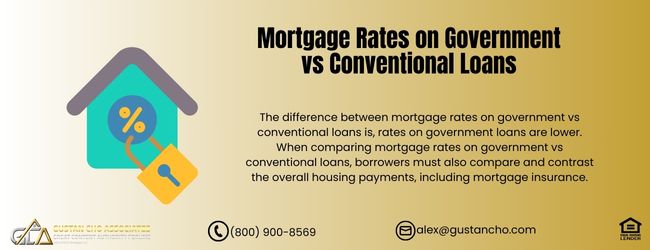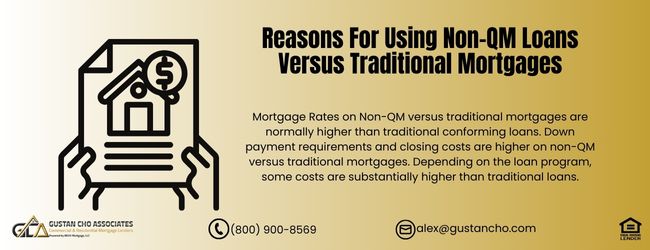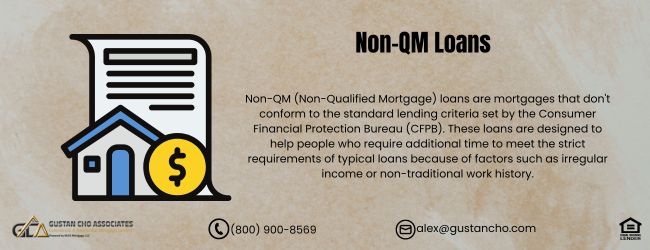Conventional Loans Versus Government Mortgages

This guide covers the benefits of using conventional loans versus government mortgages. There are many Benefits Of Using Conventional loans versus government mortgages. Conventional loans are often referred to as conforming loans. This is because conventional loans need to conform to Fannie Mae or Freddie Mac agency mortgage guidelines.
Conventional loans are not government loans. They are not insured nor guaranteed by any government agency. Conforming loans are private loans originated and funded by private lenders.
Then why do they need to conform to Fannie Mae or Freddie Mac Agency Guidelines? This is because, for Fannie Mae or Freddie Mac to purchase these loans in the secondary mortgage markets, the conventional loans need to conform to their agency guidelines. Otherwise, Fannie Mae and Freddie Mac will not purchase these home mortgages. Lenders use their warehouse line of credit to fund conventional loans.
How The Conventional Mortgage Process Works With Lenders
The minute the conventional loan is funded, they need to sell it on the secondary market so they can pay down their warehouse line of credit and reuse it to originate and fund more loans. However, if the conventional loans they fund do not conform,
Fannie Mae and Freddie Mac will not purchase conventional loans that do not conform to Fannie or Freddie standards. There are many instances and benefits of using conventional loans versus government mortgages.
Sometimes, mortgage borrowers can qualify for a conventional loan but not a government one. The biggest competitor on conventional loans for first-time homebuyers is FHA loans. Conventional loans allow for a second home or investment home financing. All government loans are for owner-occupant primary homes only. Click here to Qualify for Conventional Mortgage Loan
Benefits of Using Conventional Loans Versus Government Mortgages For First-Time Homebuyers
First-time home buyers can qualify for a conventional loan with a 3% down payment on a home purchase. HUD requires a 3.5% down payment. Therefore, you need less money for the down payment on a conventional loan versus an FHA home mortgage. A first-time homebuyer is a buyer who did not own a home in the past five years. If the homebuyer is not a first-time homebuyer, then a 5% down payment is required on a home purchase with a conventional loan. For FHA loans, the down payment on a home purchase is a 3.5% down payment regardless of whether the buyer is a first-time homebuyer.
FHA Loans For Borrowers With Bad Credit
FHA loans are the best program for borrowers with lower and bad credit scores. This section will cover the minimum HUD agency mortgage guidelines on FHA loans. The minimum credit score to qualify for a 3.5% down payment FHA loan is 580 FICO. HUD minimum credit score requirement to qualify for an FHA loan is 500 FICO. HUD requires a minimum 10% down payment for borrowers under a 10% down payment. One to four-unit homes are eligible for FHA financing.
The maximum debt-to-income ratio cap on FHA loans to get an approve/eligible per automated underwriting system (AUS) is 46.9% front end and 56.9% back end. There is a two-year waiting period after Chapter 7 Bankruptcy to qualify for an FHA loan. There is a three-year waiting period after a foreclosure, a deed-in-lieu of foreclosure, short sale to qualify for FHA loans.
Borrowers in an active Chapter 13 repayment plan can qualify for an FHA loan during the repayment plan with Trustee approval and a manual underwrite. There is no waiting period after the Chapter 13 Bankruptcy discharge date to qualify for FHA loans. If Chapter 13 Bankruptcy is not seasoned for two years after the discharge date, it must be manual underwriting. Outstanding collections and charged-off accounts do not have to be paid to qualify for FHA loans.
Conventional Mortgage Guidelines on Primary Home Financing
The following mortgage guidelines apply to conventional loans on primary home financing. 3% down payment first-time homebuyer program for homebuyers who had no ownership in a home for the past three years. Otherwise, a 5% down payment is required on owner-occupant primary home financing on conventional loans.
One to four-unit residentially zoned homes are eligible for owner-occupant primary home financing. The minimum credit score required on conventional loans is 620 FICO. There is a four-year waiting period after Chapter 7 bankruptcy, Chapter 13 bankruptcy dismissal, deed-in-lieu of foreclosure, or a short sale to qualify for conventional loans.
There is a two-year waiting period after the Chapter 13 Bankruptcy discharge date to qualify for conventional loans. There is a seven-year waiting period after a foreclosure to qualify for a conventional loan. The maximum debt-to-income ratio cap on conventional loans is 50% DTI. Outstanding collections and charged-off accounts do not have to be paid to qualify for an owner-occupant primary conventional home mortgage. Click here to Qualify for Conventional loan today
Benefits of Using Conventional Loans: Second Home and Investment Home Financing
One of the greatest benefits of using conventional loans is borrowers can finance second homes and investment properties. A 10% down payment is required for second home financing. Single-family homes that are investment properties require a 15% down payment. Two to four-unit multi-family investment homes require a 25% down payment. Below are the links to Fannie Mae and Freddie Mac Conforming Agency Mortgage Guidelines:
Benefits of Using Conventional Loans: Waiting Period Requirements on Prior Mortgage Included In Bankruptcy
For borrowers with a prior mortgage included in a bankruptcy, the waiting period to qualify for another conventional loan is four years from the discharge date of the bankruptcy. The mortgage cannot be reaffirmed. The date of the foreclosure, deed-in-lieu of foreclosure, or short sale after the bankruptcy does not matter. However, on FHA loans, if someone had a mortgage included in a bankruptcy, the waiting period is three years after the foreclosure, deed-in-lieu of foreclosure, or short sale and NOT the bankruptcy discharged date. Mortgage borrowers with a prior mortgage included in bankruptcy may benefit from using a conventional versus FHA loan to shorten the waiting period requirements to qualify for a home mortgage.
Qualifying For A Home Mortgage With High Student Loan Balance
Mortgage borrowers with high student loan balances may benefit from using FHA or conventional loans to qualify for a home mortgage. HUD, Fannie Mae, and Freddie Mac allow Income-Based Repayment (IBR) plans when calculating the borrower’s debt-to-income ratios. HUD, the parent of FHA, updated student loan guidelines that now allow Income-Based Repayment plans.
HUD followed Fannie Mae and Freddie Mac’s student loan guidelines, where the mortgage underwriter takes 0.50% of the outstanding student loan balance and uses that figure as a monthly hypothetical debt if the monthly payment is not a fully amortized number extended over an extended term.
For any questions about the content in this blog or other mortgage-related questions, please contact us at Gustan Cho Associates at 800-900-8569 or text us for a faster response. Or email us at gcho@gustancho.com. The team at Gustan Cho Associates is available seven days a week, evenings, weekends, and holidays. Click here to Qualify for home mortgage with high student loan balance






This is a good read Gus, recently updated, I’ll find content in convention mortgages.
Great breakdown of the benefits of conventional loans over government mortgages!
Government loans are for primary owner occupant homes only. Conventional loans are for primary, second, and investment homes.